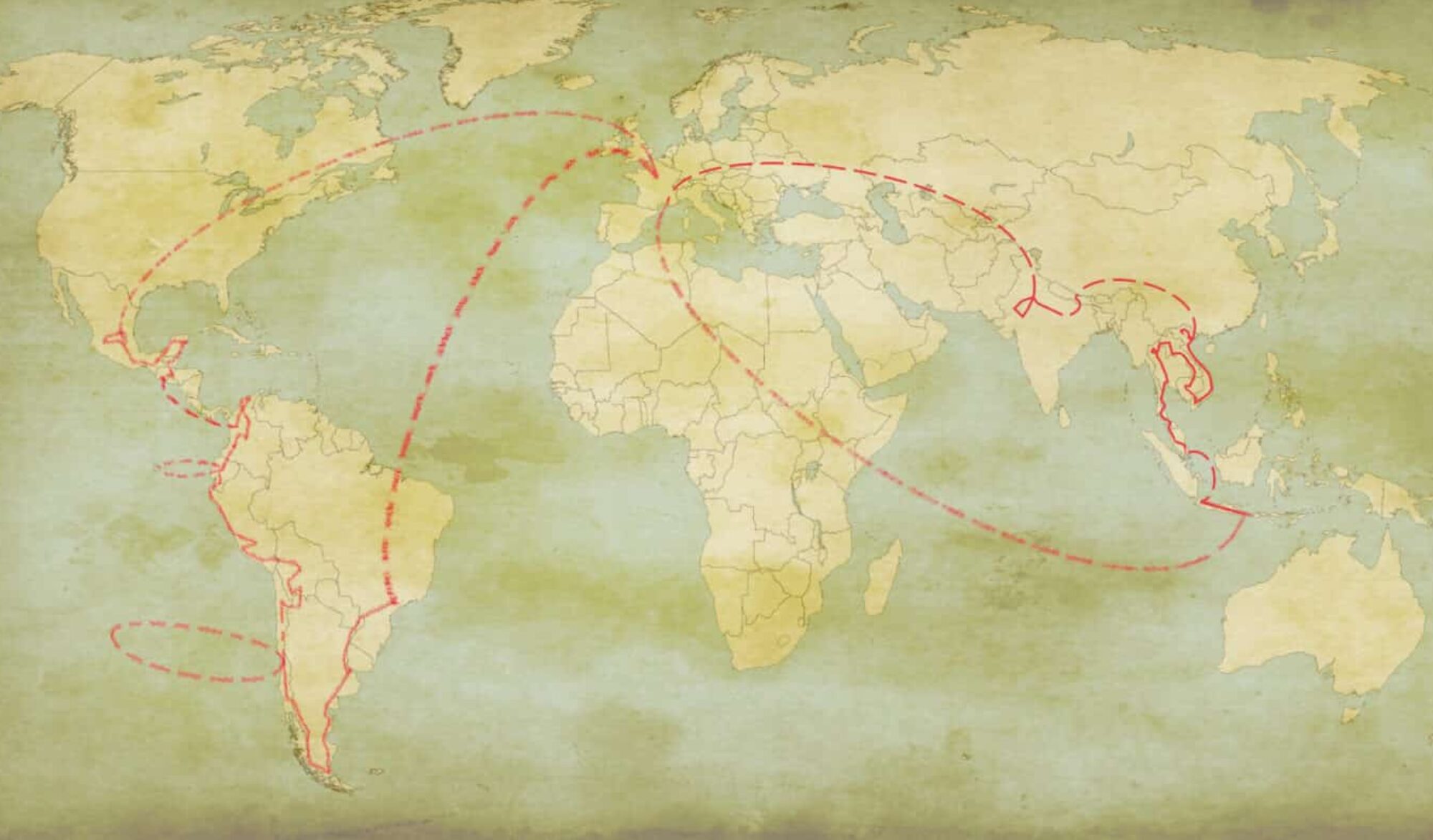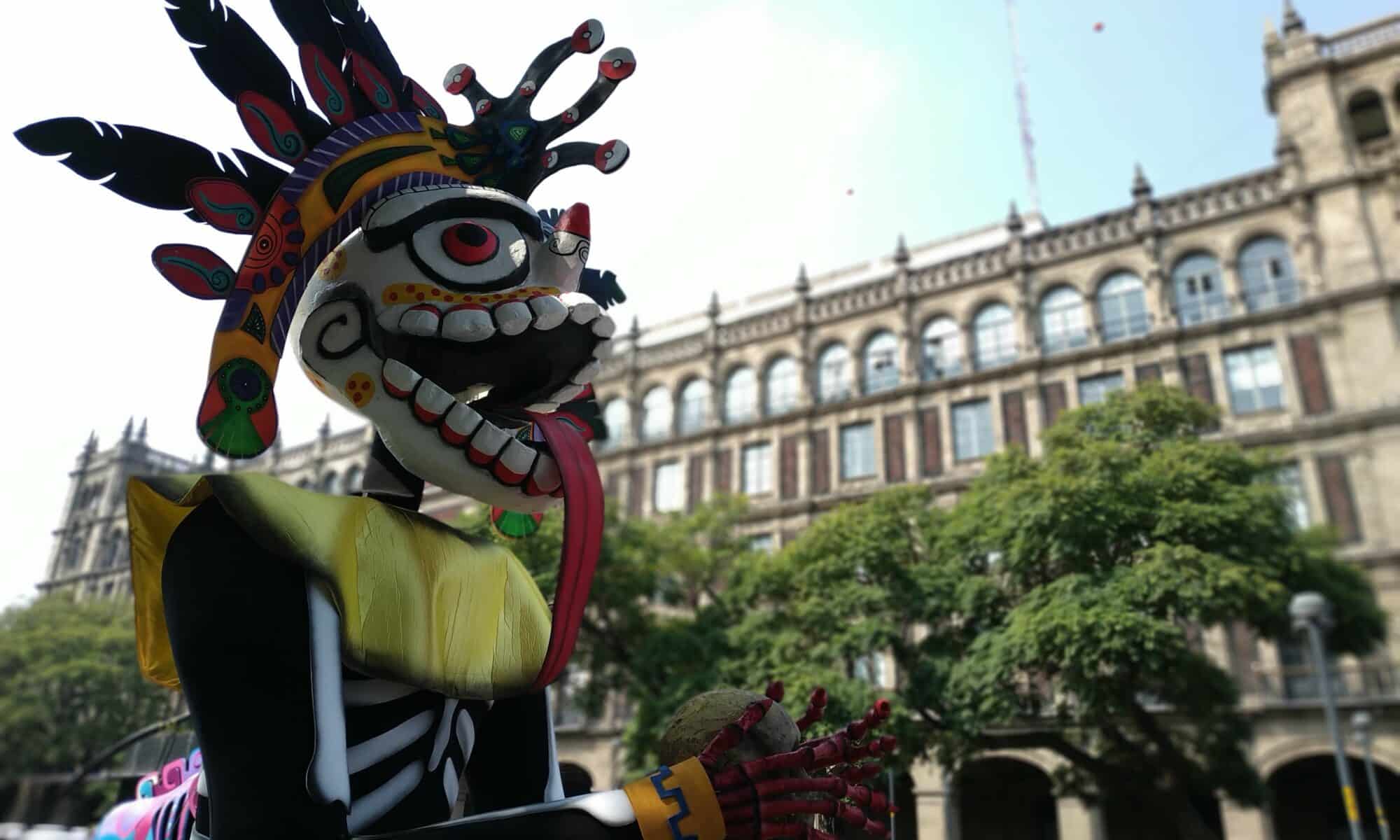All along our trip, we had the opportunity to discover many different local traditions. Several times, ancient pre-Colombian stories and customs fused with the Catholicism brought by the Spanish, a process generally known as syncretism. From the Virgin Mary represented as the Pacha Mama in Bolivia, to the guinea pig at the last supper in the cathedral of Cuzco, and the peculiar customs of the Chiapas indigenous people, we were surprised time and time again. We knew nonetheless an example of syncretism well before our trip: the día de muertos celebration in Mexico. As a matter of fact, we organised all our trip around that day. We wanted to discover the holiday’s folklore onsite!
What is the día de muertos?
During día de muertos people gather to remember the loved ones that passed away. These gathering are mostly joyous, differently from other countries in which family mourns the lost ones.
To attract and welcome the souls of the departed, people create altars, called ofrendas. These altars may contain the loved ones’ favorite food and beverages, as well as their photos and memorabilia. Ofrendas can be found pretty much everywhere: private houses, public places, and of course cemeteries.
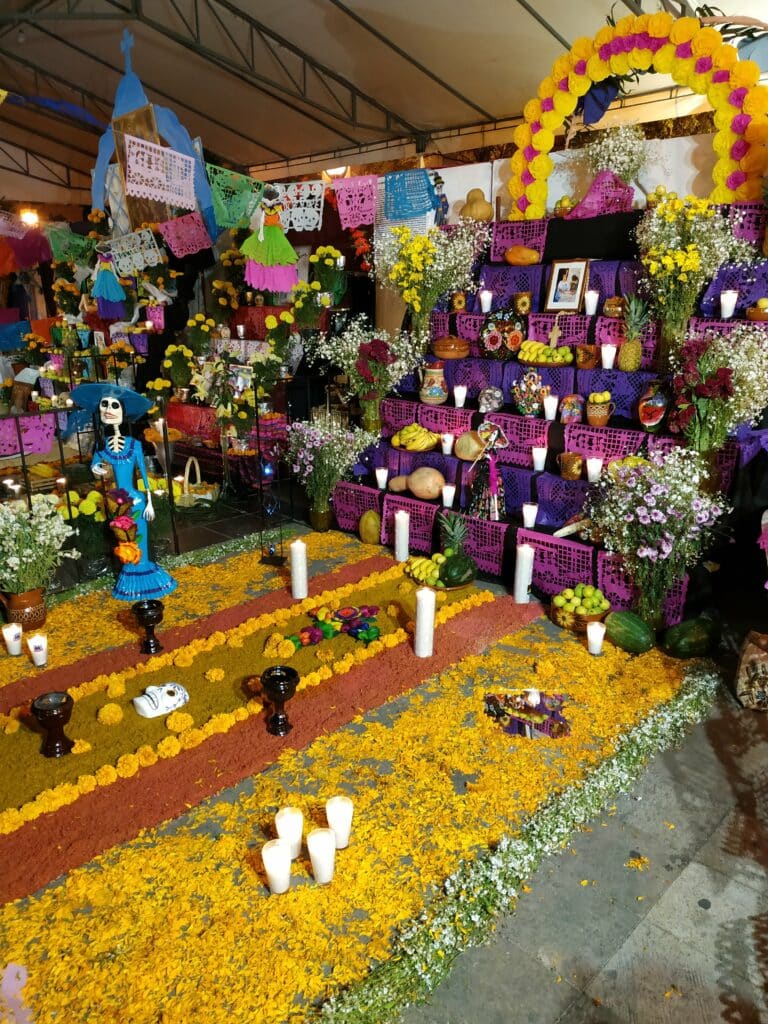
Candles and flowers are also used a lot as decoration. The traditional flower to be used is a Mexican marigold, called cempasúchil, thought to attract the souls to the offering and houses of their family.
The holiday is not only celebrated in the privacy of the house. Food, like sugar skull candies or a typical bread called pan de muerto, is shared among friends.
Many cities streets and buildings are also decorated. Even though día de muertos is celebrated each year between the 1st and 2nd of November, the preparations start well in advance. You might find yourself walking among streets filled with skulls and cempasúchil even weeks before November!
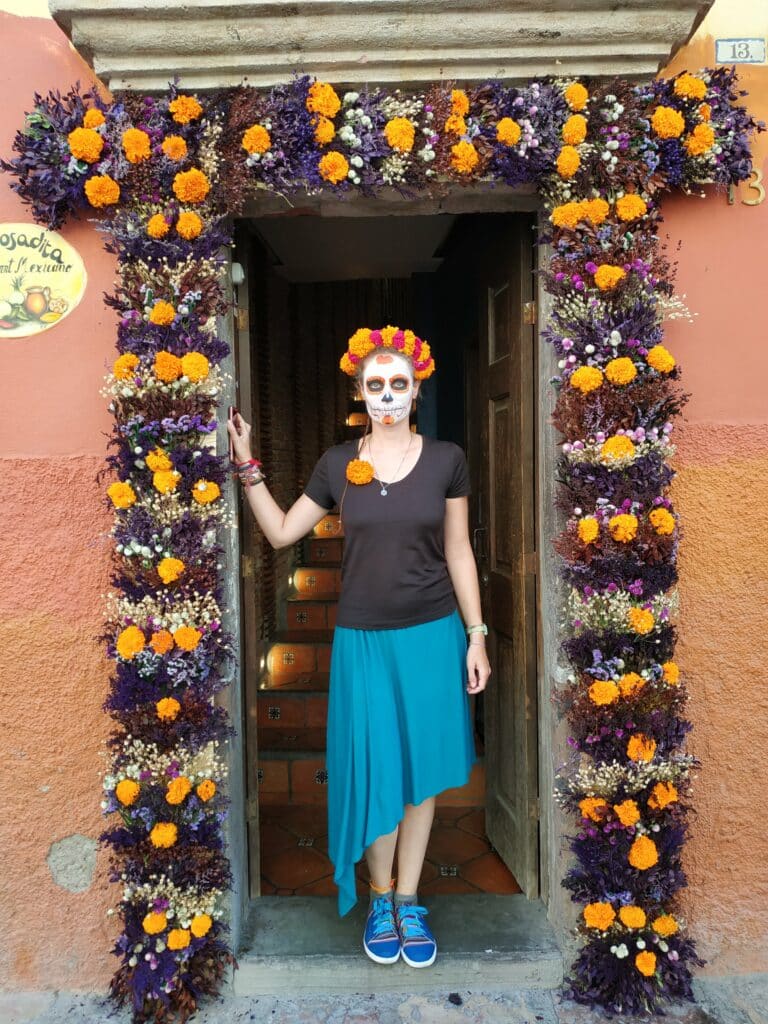
Even though there are many things in common between the traditions in different parts of Mexico, a lot of rituals change from one place to the other: we saw just a small part of it!
San Miguel de Allende
We met with a friend in San Miguel de Allende to spend the día de muertos together. Holiday or not, the historical city center is beautiful, with cobblestone streets and baroque buildings. So beautiful, in fact, that it became a UNESCO World Heritage Site in 2008.
The streets are richly decorated for the día de muertos. Many doorways are covered in skulls, cempasúchil, or other flowers, that sometimes are used also as carpet. Typical cutout paper chains hang on top of the streets. Ofrendas can be found at every other corner.
The same decorations can be found on the graves. You can visit the cemetery until 6 pm, to have a glimpse on how the day is passed by the families. Many have picnic close to the graves of the loved ones, as if they are still with them. We even saw a group that hired a mariachi band to provide some soundtrack.
If you want to get even more in the spirit of the holidays, many make-up artists in the city center offer to paint your face as a skull. At night, marching bands and masked people parade in the streets. We also joined one of these parade, a spontaneous one, led by some mariachi and a papier mache Catrina. The Catrina, a female skull in a big hat, is a character that over the years became the international symbol of the Mexican día de muertos.
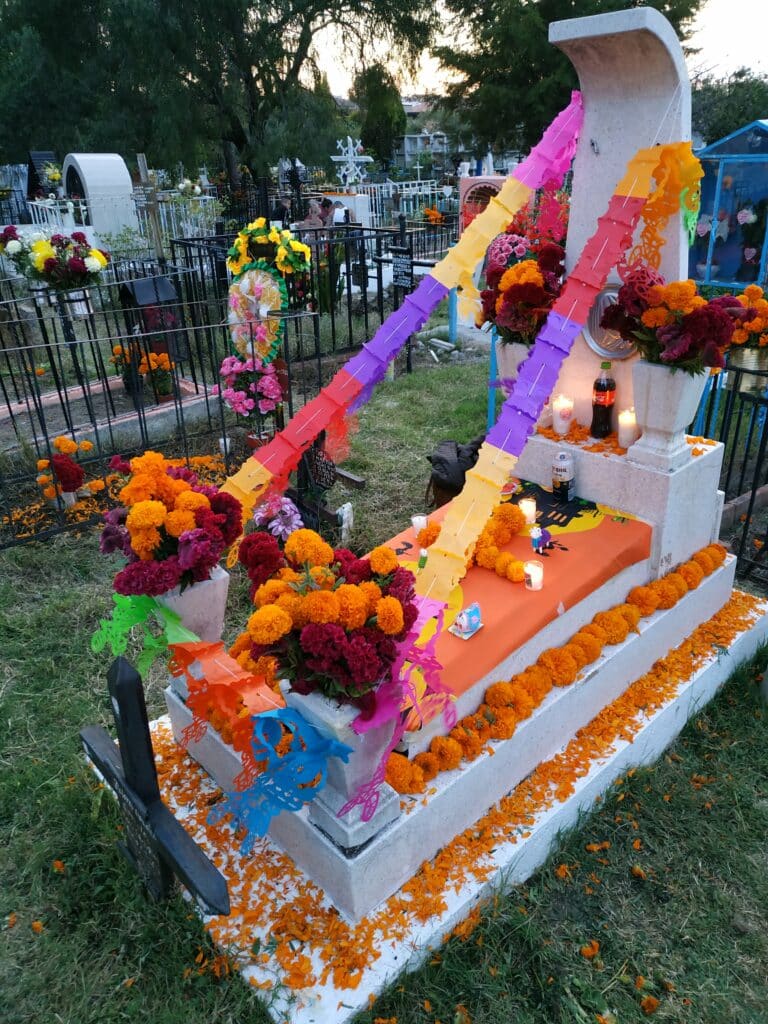
Many US citizens visit and live in San Miguel de Allende, so, naturally, some Halloween tradition is also followed here. In particular, we found many kids trick-or-treating on the street!
Ciudad de México: a not so traditional parade
Also in the capital the holiday is celebrated in every street, but the commercial part of it is much more present. It is possible to buy souvenir of the day at every corner. The many touristic sites, like the house of Frida Kahlo, are also decorated.

A big parade is organized, with carts, dancers, and people in costumes. While at the beginning it might look like an old tradition, similar to the carnival parades in other countries, it is really not. The first día de muertos parade in the Ciudad de Mexico was done not even ten years ago. And the inspiration from that came from… an American movie about a British spy. The opening scene of Spectre, the 007 movie, gave a good marketing idea to the local tourism office that decided to make it a new tradition.
If you want to see the parade, you should expect lots and lots of people, and a long wait. The wagons pass by most of the city center, from the Zocalo to Chapultepec. You should carefully choose on which side of the street you want to stay. During our visit, it was almost impossible to move from one side to the other, even hours before the passage of the first cart! We were stuck, in sight of the metro station, but on the wrong side of the street… We had to walk and wait a lot to be finally able to move on.
Día de muertos in other parts of Mexico
Día de muertos is celebrated all over Mexico, but of course wherever you are you might find some difference on how the dead are remembered and celebrated.
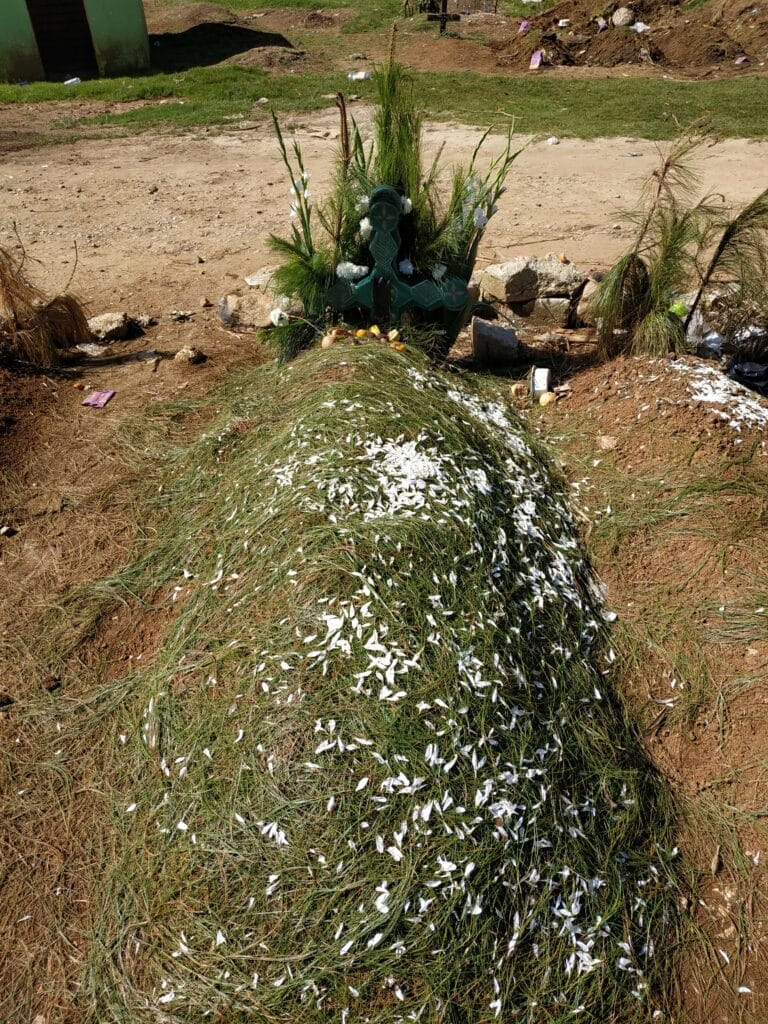
The people of San Juan Chamula decorate the tombs of their beloved with pine needles and flowers, as we discovered while visiting Chiapas.
While on our way to San Miguel de Allende, we stopped for a day in Queretaro. The whole city center was decorated, not so much by ofrendas, but by papier mache skeletons, rag dolls, and big colorful skulls. Some paper mask were also distributed to get more into the holiday spirit! Walking through the nice city center then became also an opportunity for some nice photos.
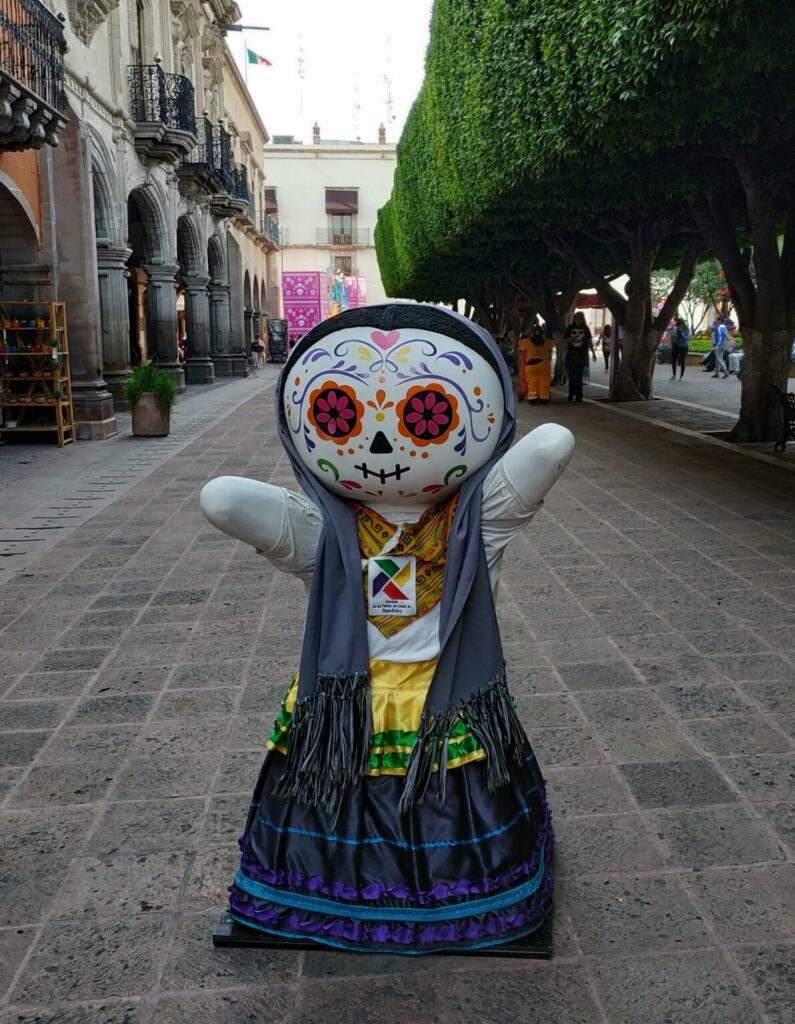
According to some friends from Guadalajara, one of the most traditional celebrations of the día de muertos can be found in the state of Michoacán. That was also where we wanted to spend it originally, but the logistic of the trip was not optimal. Apparently, many Mexicans go there in these periods to enjoy and discover the local ways. If you pass by there at the end of October, it can be quite crowded!
If you are interested on how the day is celebrated in Oaxaca, and you speak French, you can check this article from the blog Voyage de miel.
To not miss any of our adventure, subscribe to our newsletter!
